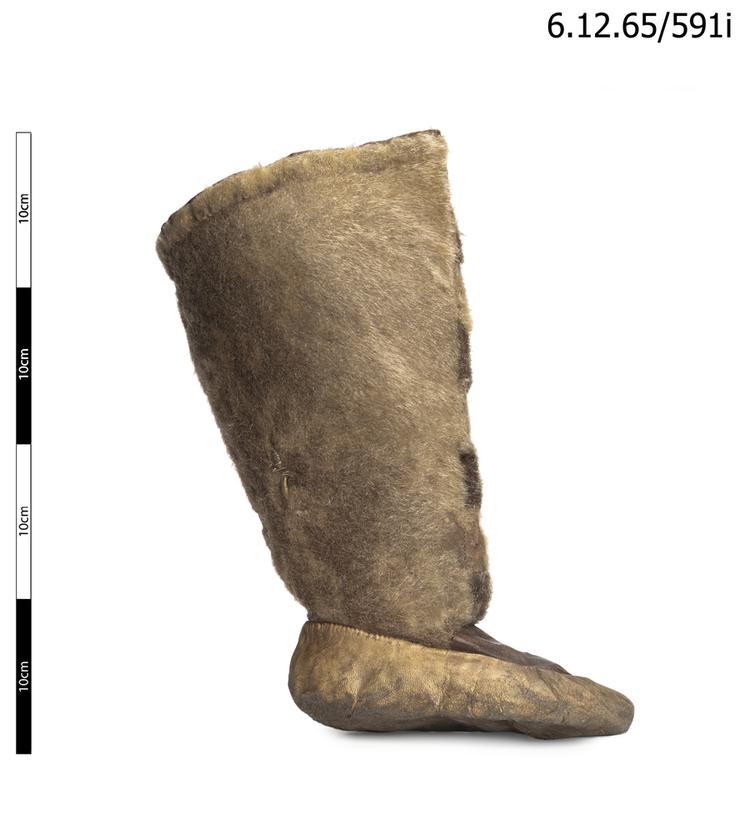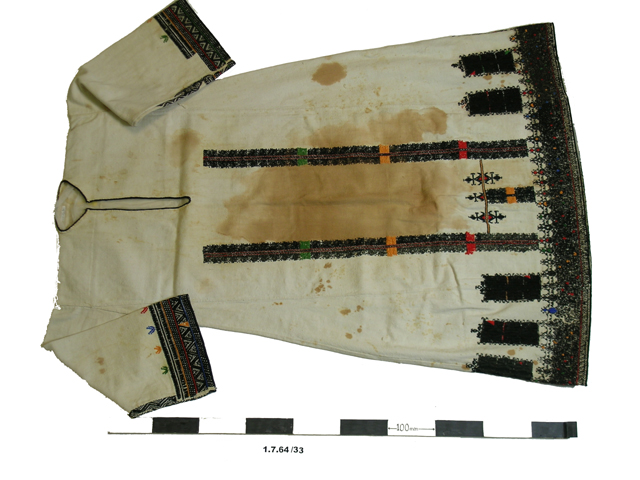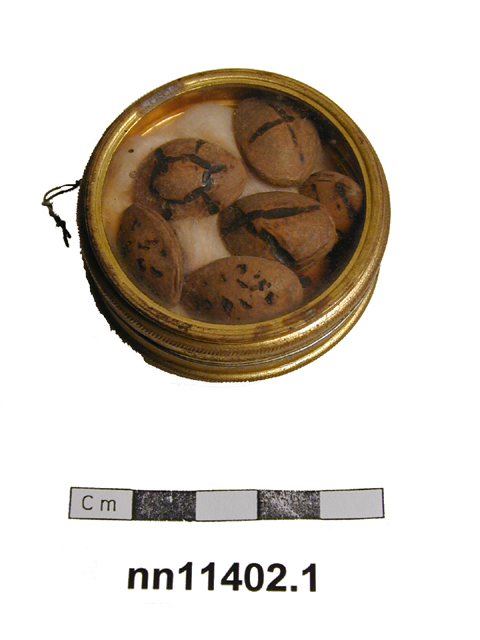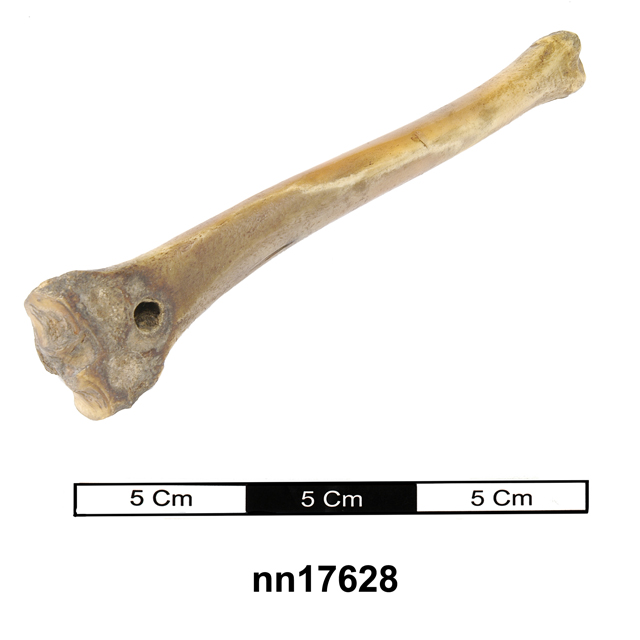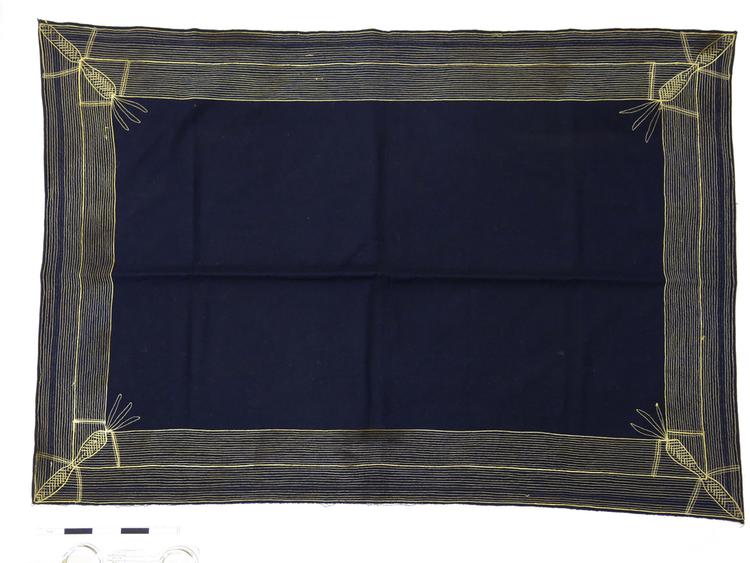
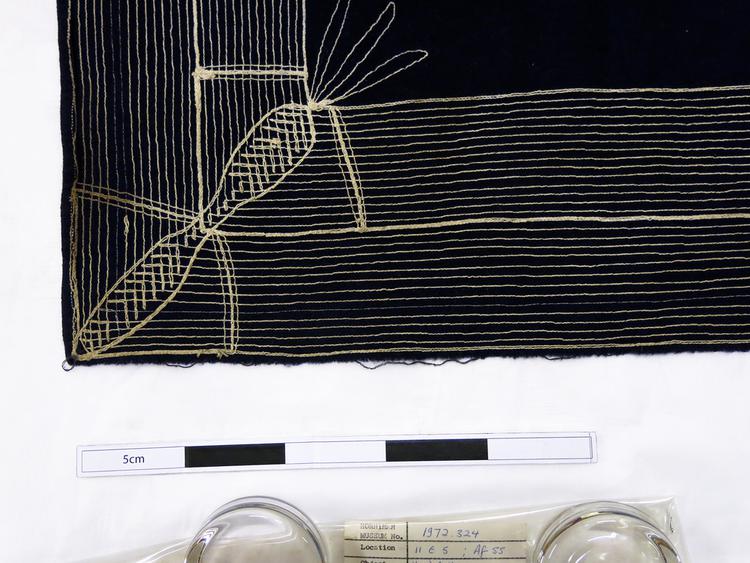
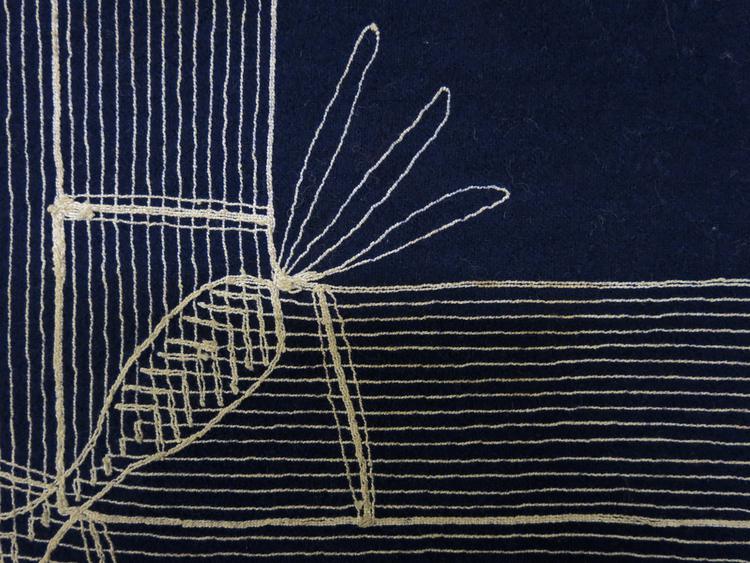
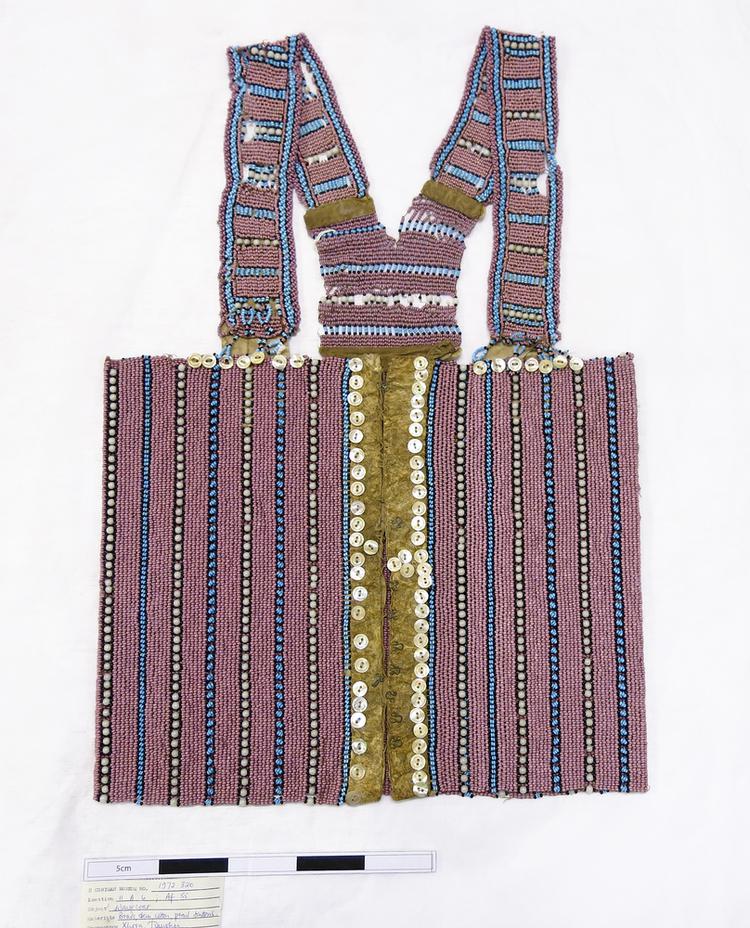
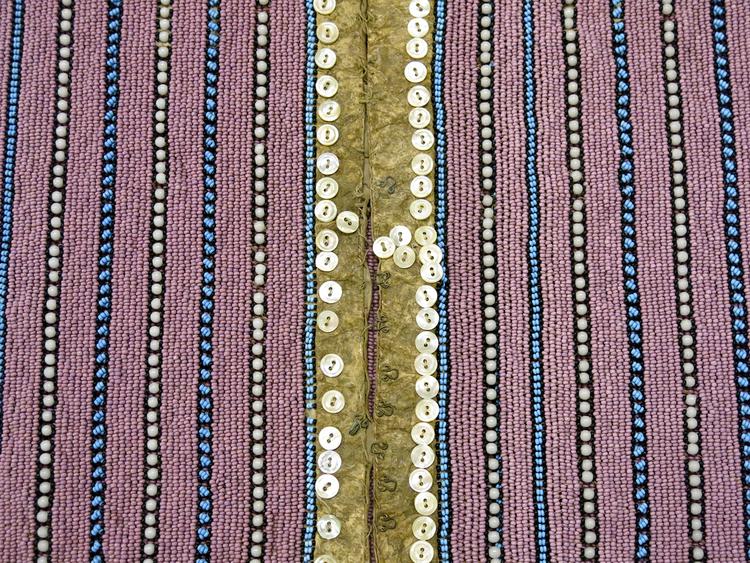
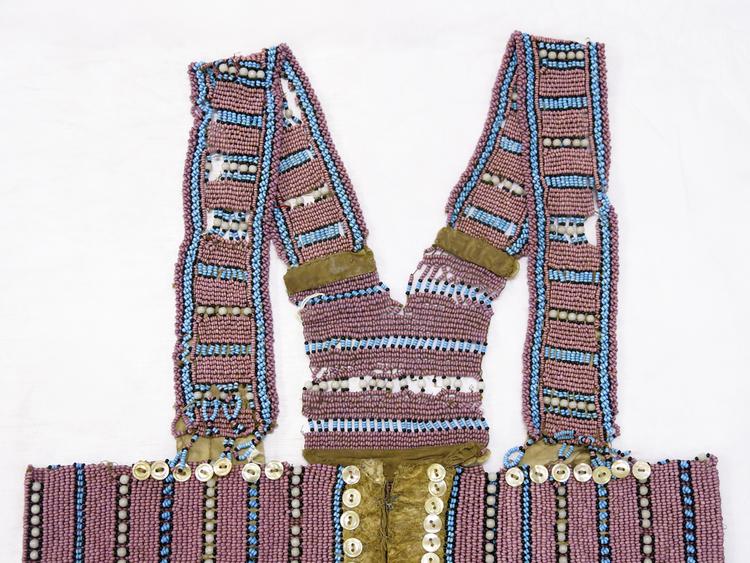
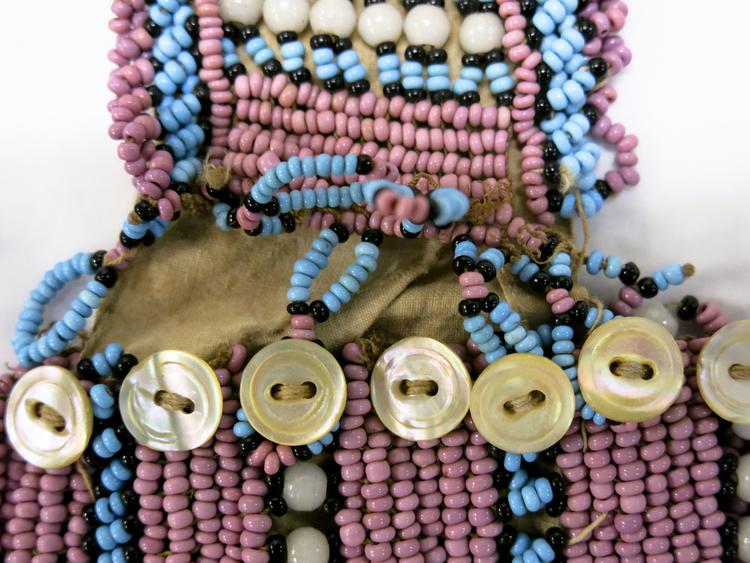
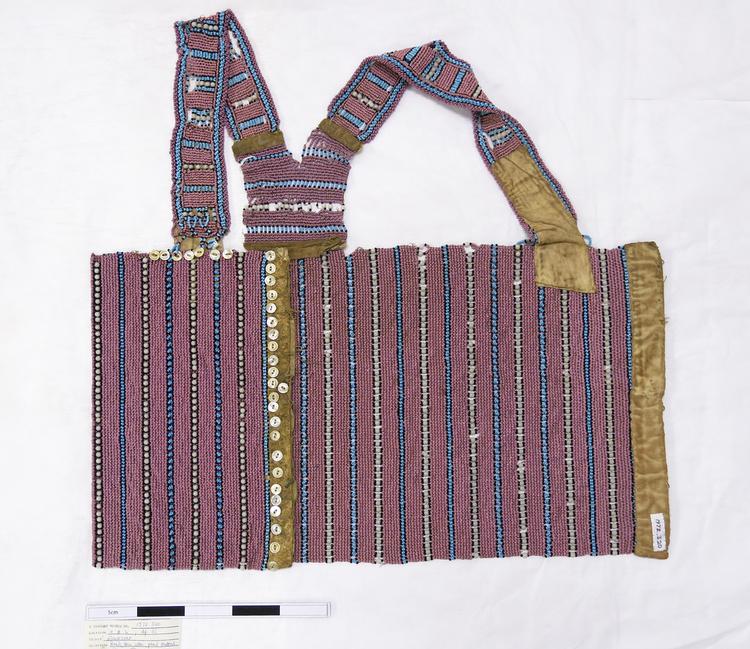
Rectangular woollen head cloth from Transkei, South Africa, navy blue, with white cotton stitching for decoration. The cotton is threaded in thin bands, running along the length of the bottom edge. In each of the cloths four corners is a flower or tree shaped pattern.
ighiya (pl. Amaghiya), a square (amend to head rectangle) of melton fabric, decoratively sewn with machine stitching and used as a headcloth by unmarried young women on festive occasions and for everyday wear by married women. The latter often have one or more other head-cloths for special occasions. A married woman is required to keep her head covered at all times, one of the obligations of the pattern of respectful observances towards her husband's agnates and their ancestors. The method of tying the headcloth varies according to region and fashion. The one prevailing in the area from which this specimen comes is as follows: with the hemmed side treated as the inside, the cloth is folded into two triangles, one smaller than the other. The base of the triangles is then folded upwards to form a broad band of about four inches. When about to don the cloth, the wearer will bend forward, place the broad band facing outwards over the base of the skull, with the points of the triangles covering the head and hanging down over the forehead. The ends of the band are then brought round towards the forehead, crosssed over and tucked into the band. The points of the triangle are then tucked into the band to form a covering over the crown of the head.



